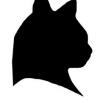The most common ant is my area of southern California is the Argentine Ant (in fact, they are busy scavenging in my kitchen as I write this). However, when I go for my morning walk I encounter three other species on an approximately 100-yard stretch of sidewalk. This is in a built-up area of single-dwelling houses. One species has a nest in the dirt margin on the west side of the sidewalk where a gate opens into a flood-drainage area about an acre in size (no structures and with natural vegetation). I believe this species to be one of the harvester ant species common in non-urbanized areas of California. The workers are about a quarter-inch long and have reddish heads and thoraxes and black abdomens.
The two other species are nesting in several places under the sidewalk and have their nest entrances in the crack between sidewalk and the curb (each entrance is surrounded by soil excavated from the nest). One of these species is very small, the workers are black and about half the size of an Argentine worker. They also appear to move more slowly than either argentines or harvesters.
It is the third species that most interests me. The workers are only slightly larger than argentine workers, but have exactly the same color scheme as the much larger harvesters. That is, they have red heads and thoraxes and black abdomens. When I first saw these ants I thought they were argentines. It was only when I got down on hands and knees that I recognized they were something else. Are they some kind of hybrid between harvesters and argentines? I know from that hybridization between ant species takes place, but I thought it was only between closely related species. The Argentine Ant is an invasive species in California. I don't see how it can be closely related to our native ant species. But then, what do I know? So my question is : What am I seeing here?
Thanks you for any help with this.

















